

Suunto Blog
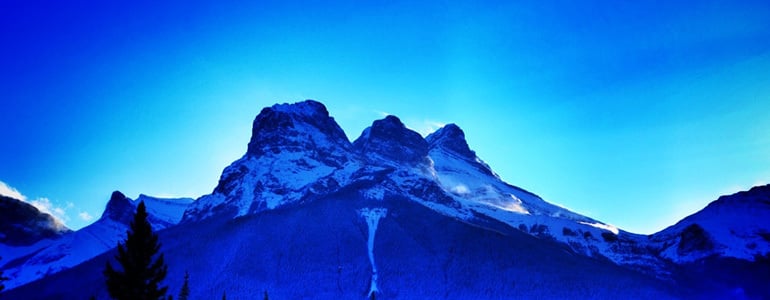
Winter is coming: is your body prepared?
Matthias Scherer and Tanja Schmitt are two of the most active ice climbers in the world. How are they preparing their bodies for the upcoming season? By dry-tooling and cranking out sets of pull-ups and other drills in the gym, that's how. Below, they share some of their training secrets.
Dry-tooling “Drytooling means climbing with ice tools and crampons on rock,” says Matthias. “It's a very good physical preparation for ice climbing but should not be confused with ice climbing. Ice climbing is (like alpinism) all about the experience. You have to be willing to learn new things continuously and constantlyadapt to the challenge the ice or the mountain presents. Matthias Scherer drytooling in Canmore, Canada. ©Tanja Schmitt
Many of the drytooling crags feature drilled holds. Drilled holds gives you the advantage that your tools will "stick" safely in the rock, so you can do athletic moves without the chance of popping your tool off – but you will not learn the skills how to scratch and place tools precisely on natural features. Those skills are primal when it comes to real mixed climbing. So new school drytooling on drilled holds is a great way to get physically fit, but it will not replace, or give any experience for ice or mixed climbing.”
Tanja Schmitt drytooling in Canmore, Canada. ©Matthias Scherer
“Our goal was to build core and arm strength Since we were able to climb a very athletic M9 10 times in one hour means that we achieved our goal!
Indoors – at the gymWhile the best form of training is the real thing, gym sessions are also important parts of any fitness regime. These are some of the drills that Matthias and Tanja perform. “Our training in the weight room has the unique goal to compensate the hard impact that drytoolinghas on the body. So we train the opposite muscles after each Drytool workout next day in the gym. The training does not take a long time, in fact it can be done in 40-60 minutes. 20 minutes of a warm-up is however essential! Basically we do three circuits consisting of 6 different exercises. Each exercise or “set” consists of 10-15 repetitions and two minutes rest beween exercises.”
Matthias front lifting weights. ©Tanja SchmittOne circuit consists of:
Lateral Raises with adjustable dumbbells
Front lifting with adjustable dumbbells
Reverse butterly
Chin pulls with a barbell
Push ups
Hanging leg raise (straight and bent arm)
Tanja performing lateral raises. ©Matthias Scherer
A quick daily training routine during the whole year when the pair can not go climbing is:
3 x 30 pull ups - two sets on tools, one on hands3 x 30 push ups3 x 15 hanging leg raises3-5min rests between exercises. “In fact, we go on the slackline in between the sets, it's less boring.”
Ueli Steck nominated for Adventurer of the Year award
Congratulations to Suunto ambassador, Ueli Steck who has been nominated for the National Geographic 2015 Adventurers of the Year award for his speed ascent of the south face of Annapurna. The award recognizes the amazing achievements of outstanding individuals in exploration, conservation, humanitarianism, and adventure sports in 2014.Steck’s solo climb of the 8,091 m peak took just 28 hours there and back – a feat that should normally take at least four days. He says it’s the biggest climb he’s ever done and admits he took too much risk to complete it. An avalanche hit him at 7,000 m and after that he accepted that he might not come back alive: “I was just climbing, totally accepting that it might be a one-way ticket,” he told the magazine.
Ueli Steck, photographed in Chamonix in 2013. ©Jon Griffith PhotographyObservers believe Steck has changed the face of modern mountaineering with his fast-and-light style. But he acknowledges that Annapurna was a once in a lifetime experience: “I don’t want to do a route like this again in this style.”So what’s next for “the Swiss Machine”: ‘I really love climbing. It’s like a living process. Right now I’m just focused on the 8,000-meter peaks. I don’t know what’s next. I don’t think I will get tired of climbing.”
Now is your chance to vote for Ueli to be the 'People's Choice' Adventurer of the Year. Last year it was won by Kilian Jornet. Let's make sure it's Ueli, the Swiss Machine for 2015.
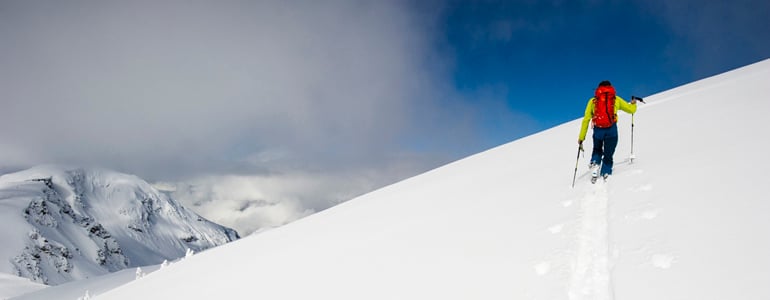
How to use HR to stay safe in the mountains
Thought your HR monitor was just a training tool for fitness? Think again. It's actually an invaluable guide to staying safe in the mountains, says Mountain Guide Fabien Meyer.
Heart rate monitors are most commonly associated with performance sports and are an invaluable tool to improving your fitness, training intelligently and gauging your progress. But not many people realize they can help you make the right decisions in the mountains – decisions that could ultimately save your life.
“If you're not acclimatized your heart rate will be about 20bpm above normal.”
How so? Heart rate data can provide an accurate guide as to whether you're acclimatized. That in turn will tell you whether you're moving fast enough to make that summit in time before the weather turns. “You can use heart rate to see if you're going to make the summit,” says Meyer, who's based in Chamonix. “If you're not acclimatized your heart rate will be far above your normal rest rate. So if you're ascending 500 m per hour normally (same activity, same weight, in your home place) at 70-80% of your HR, you will be at a heart rate of more than 85-90% of your max HR. That's going to be too high to sustain. You'll go into your lactic window after five minutes and after 30 minutes you will be obliged to slow down. And because of acidity you can not hope to come back at the same efficiency.”
Using HR will help you acclimatize more effectively. ©zooom.at/Ulrich Grill
He gives the example of the classic Whymper Couloir route in the Mt Blanc massif. It's south-facing so parties have to move fast to be able to make the summit and get off in time. A heart rate monitor will help you make an informed decision as to whether you can make it.
“You have to go quite fast and ascend 400m per hour for 4-5 hours. Using heart rate you can quickly see if you can make it in a good state.” He adds that training with heart rate also works as a powerful incentive to fuel your climbing goals. Climbing is all about efficiency and moving quickly in difficult terrain, he explains. “If you do the same trip you did a month ago but with a 10% lower heart rate that's a great motivation.”
Fabien Meyer is a Mountain Guide based in Chamonix, France.
Top image ©Bruno Long
READ MORE
This is how Kilian Jornet prepares for Everest
Greg Hill's mountain rules
7 tips to accelerating your uphill speed
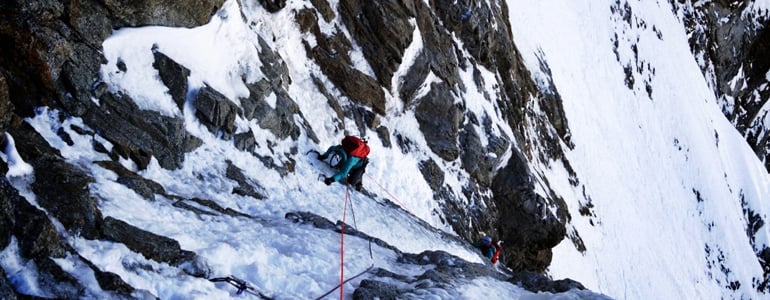
Great conditions on the Grandes Jorasses
Unseasonal weather has put the epic north face of the Grandes Jorasses in great condition. On hand to take advantage were Matthias Scherer and Tanja Schmitt. Check out their video below, and also in their own words their experience taking on the 4,208 m icon of the Mt Blanc range at the end of September. Their route? The classic 1,200 m MacIntyre-Colton, grade: VI 6Due to an unstable summer with cold temperatures and a lot of rainfall many ice gullies of the big faces in the Mont Blanc massif started to build up early. By the end of summer many routes that normally only form in colder autumn or winter air suddenly stood splendidly in a fading summer light. Above all the Grandes Jorasses (4,208 m) loomed over the massif, unrivaled, her tremendous north face strewn with veins of daunting, glittering ice.
September the 25th 2014 Tanja Schmitt, Matthias Scherer and Heike Schmitt tracked along the Mer de glace and built up their tent for the night. Their objective is the MacIntyre/Colton route on the Grandes Jorasses north face. They decided to embark early, climbing the long ice fields in complete darkness to achieve the more challenging mixed parts of the climb in the oncoming daylight.
The plan worked out perfectly. The team simul-climbed the lower ice field in the dark [when parties move together to save time]. In the upper part the ice becomes steeper. The crux existed of a snow/ice mixture, and so not really hard to climb it was impossible to protect. After some more ice fields they achieved the mixed climbing parts of the route: Technical climbing with sections of thinner ice. Everyone enjoyed the climbing. The team achieved the summit late in the day and paused for a rest, melting some snow for rehydration. The fading daylight was bathing the scenery in an incomparable beauty. Says Tanja: “As we stood there, in awe at this unearthly sight, all endeavors before and others yet to come seemed of no importance: the magic of the team- spirit and the magic of the mountains were glowing above all.”
The team on the Jorasses summit
All images Matthias Scherer
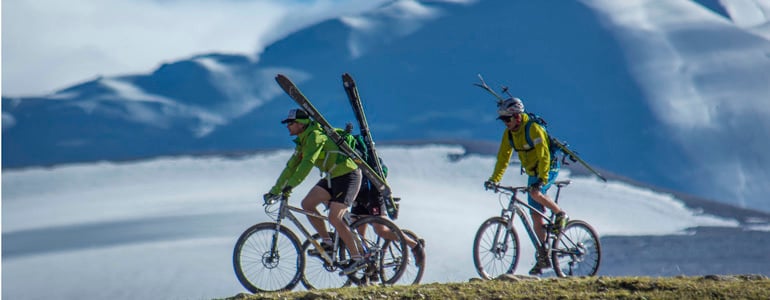
Avalanche on Shishapangma
We're sad to report that two climbers attempting to climb Shishapangma have died in an avalanche near the summit. We had earlier shared on these pages how Benedikt Böhm, Sebastian Haag and Andrea Zambaldi were attempting to climb two 8,000ers within a week. We had supported them with product.
“At 06:55 local time on 24th September, Sebastian and Andrea were caught in an avalanche at 7.900m, just 100m below the summit and were dragged for 600m vertical, over steep glaciers, into another section of the mountain,” a statement read on their website. The full report can be read here.
Haag, Böhm und Zambaldi at the start of their trip in Kathmandu. © Elias Lefas
Benedikt attempted to search for the pair with Ueli Steck, who was not part of the expedition but was climbing with Benedikt. Unfortunately the two were not able to reach the avalanche debris zone and were forced to turn back.
Our thoughts go out to their family and friends.
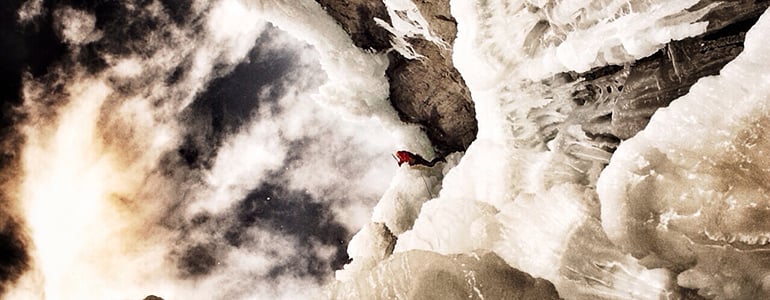
Time to plan some classic ice
Winter is coming! Time to start thinking about that ice climbing trip and where to head to this season. To help you make up your mind, we spoke to Suunto's Matthias Scherer and Tanja Schmitt and asked them for their recommended venues. In this first installment the pair, one of the most active ice climbing partnerships around, offer up some of the best lines for beginners and intermediates in the European Alps. Better start training...
Cogne, Italy
Matthias climbs steep ice in Cogne. ©Tanja Schmitt
Let's start with our home area 'Cogne'. Doubtless one of the best places we know so far to get a lot of climbing done within easy and quick access. But be aware – when it snows or the wind is blowing, our valleys become serious avalanche terrain – so please check always the avalanche forecast, before starting your adventure.
We recommend of course the 'Cascate Lillaz'. In good conditions it's a wonderful climb in the grade of WI 3. Small objective dangers and equipped belays with the possibility to quit the ascent on many places makes it a perfect beginners' line.
Freissinières and Sixt Valleys, France
Matthias climbs 'Shiva Lingam' in the Chamonix valley. ©Tanja Schmitt
This country hosts some of the most impressive ice climbing areas in Europe: Freissinières and the Sixt are valleys with incredible lines.
For scenic climbing in one of the most famous places in alpinism we recommend the 'Ruisseau du Picheu', WI 2 near to the Le Tour village in the Chamonix valley. Of course, you also need to check the avalanche conditions.
Kandersteg, Switzerland
Tanja Schmitt on Glücksritter, Adelboden, Switzerland. ©Matthias Scherer
Not really for beginners but in good conditions and with a stable snow pack a great challenge for the medium ice climber is the 'Glücksritter' fall WI 4+ in Adelboden. Impressive ice formation with a quick access in a wild cirque near to the world famous ice climbing area of Kandersteg...
Stubai valley, Austria
There's no easy way around the Stubai valley and the ice climbing area above the Pinisalm. The approach, with a toboggan (rent at the ski station) from the Elfer-ski area is super fun. Pinistal is home to impressive lines like 'Maenner' or the 'Kerze', a very aesthetic line. We recommend the massive ice shield of the 'Vorhang', WI 4+. In case the climbing is not exciting enough for you the way down back to the valley on the toboggan will do the job...
Velocity, the new ice climbing film from Matthias Scherer and Tanja Schmitt can be seen here.














































































